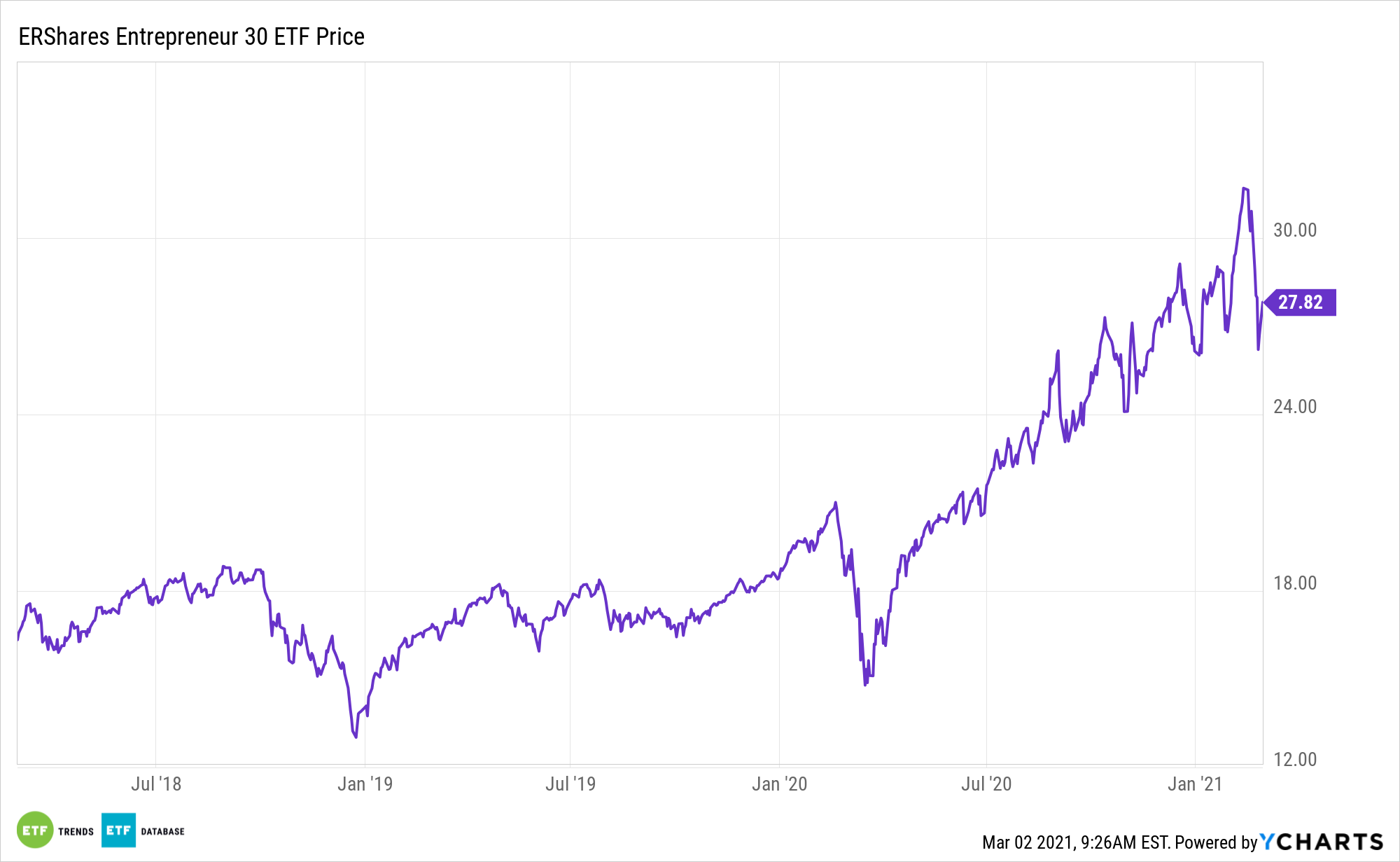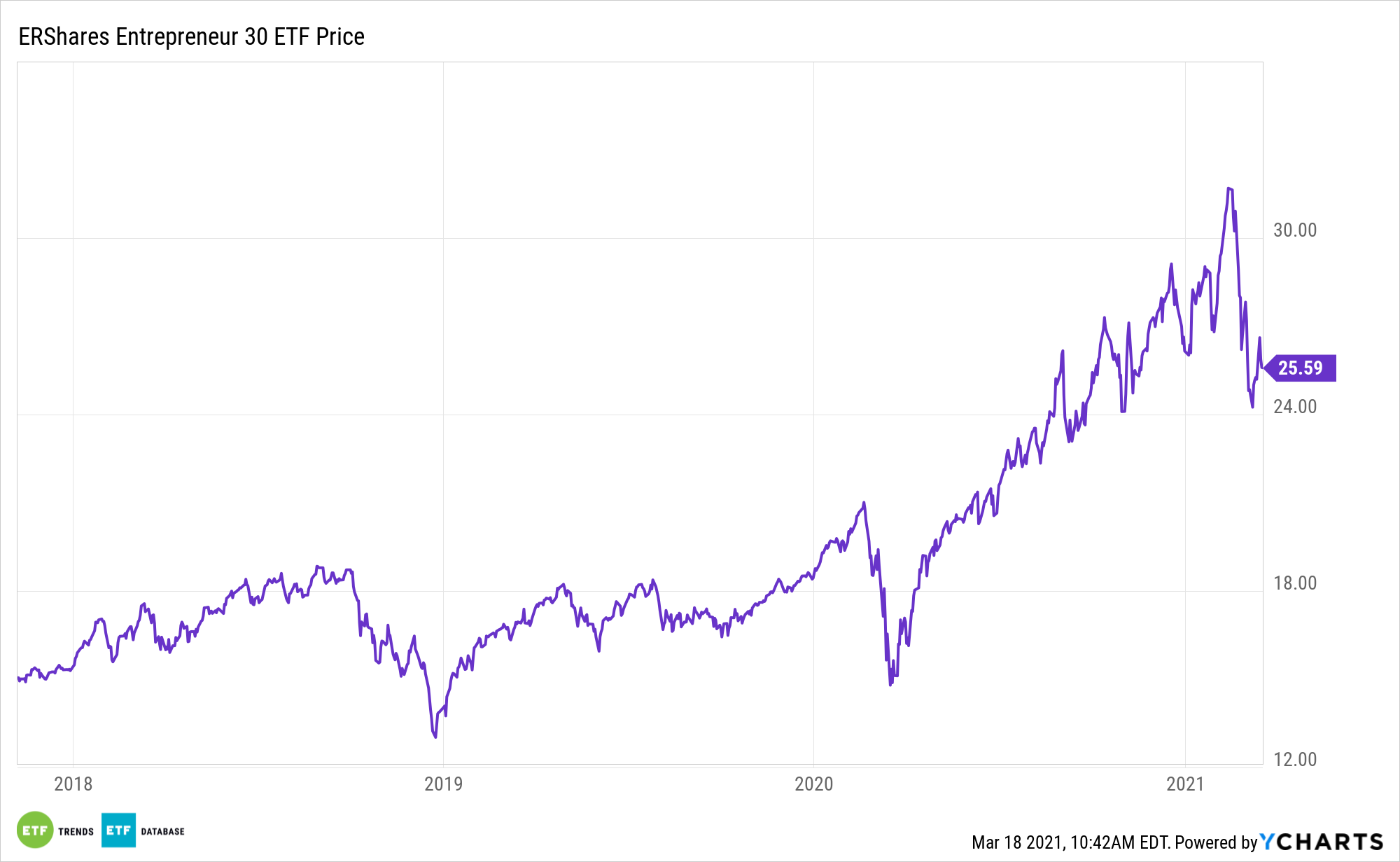Treasury yields are rising, making an already tricky fixed income environment all the more thorny to navigate. Some investors may want to consider ditching government bonds in favor of entrepreneurial companies with the ERShares Entrepreneurs ETF (ENTR).

ENTR tries to reflect the performance of the Entrepreneur 30 Index, which is comprised of 30 U.S. companies with the highest market capitalizations and composite scores based on six criteria referred to as entrepreneurial standards. ENTR primarily invests in US Large Cap companies that meet the thresholds embedded in their proprietary Entrepreneur Factor (EF).
In a recent interview with financial news network Cheddar, ERShares’ Joel Shulman outlined the case for entrepreneurial companies in the current climate, noting “that interest rates are still low based on historical levels and actually need to rise a little in order for the Fed to deploy future monetary policy solutions. He reminds listeners that between 2003-2007 the Fed actually had 18 rate hikes while the Markets appreciated 50%,” according to ERShares.
A Powerful Paradigm Shift for Entrepreneurial Investors
The ETF “incorporates a bottom-up investment orientation, powered by artificial intelligence (AI), that stands above other investment factors such as: momentum, sector, growth, value, leverage, market cap (size) and geographic orientation. Moreover, with the aid of AI and Thematic Research, ERShares incorporates a macro-economic, top-down approach that integrates changing investment flows, innovation entry points, sector growth and other characteristics into a dynamic, global perspective mode,” according to ETFdb.com.
Adding to the case for ENTR is that last week’s market selloff caused by rising Treasury yields was perhaps overdone when it comes to equities.
Shulman notes “that much of the market’s response to interest rate spikes is appropriate for the bond markets, but may have been an overreaction for equities.”


